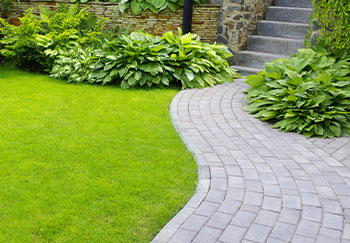How to Get Rid of Moss in Your Lawn Easily
September 7th, 2023 | Categories
A green lawn is one of the goals for many homeowners and gardeners. Even if they don’t have a love of flowers and shrubs (yet) a good lawn is something many aspire to have. But there’s one culprit out there that can suffocate your lawn and stop grass from growing healthy. That culprit is moss.
We’re not bashing moss entirely, on the contrary, moss isn’t some terrible thing. It’s a fantastic living thing that colonises many sites where ecosystems have been disturbed to stabilise soil and retain water, helping new plants to grow again. However, when you want a lush lawn of grass in your garden it’s perhaps not ideal.
In gardens, moss is one of the most stubborn things that can develop in a lawn slowly over time. Relatively unnoticed too, it can give the appearance of a fresh green lawn, yet it’s not actually grass but moss. Because moss has great water retentive properties, it makes the soil and grass amongst it susceptible to drought, disease, and pests. Left unchecked, you can have a back garden ‘lawn’ that’s mostly moss.
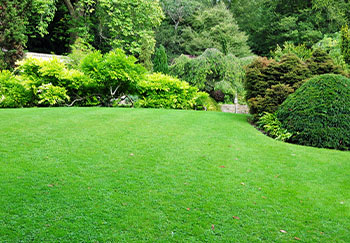
Can a Lawn with Moss be Saved?
In a lot of cases when it gets to this stage, many people begin to think about re-turfing entirely which is an expensive undertaking. However, you’ll be pleased to know there is another way! Kill the moss and remove it by scarifying. While it sounds complex, this is just the process of removing thatch, dead grass, and moss from your lawn. It takes some personal effort with the right products and tools, but it can work.
Read through our guide to learn the easy process of removing moss in your lawn.
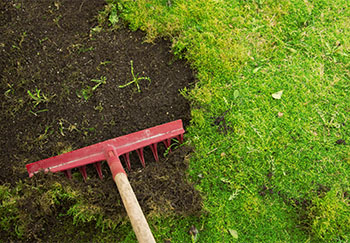
When’s the Best Time to Get Rid of Moss and Scarify the Lawn?
The best time is at the start of spring before growth really kicks in. This gives the best opportunity for grass you already have to regrow, as well as let new grass from seed establish.
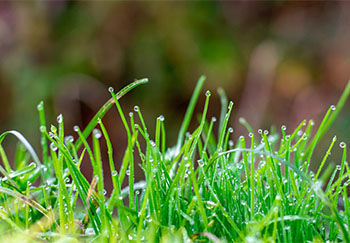
What You’ll Need and How to Remove the Moss
All the essential items to make the process of removing moss from your lawn as easy as possible.
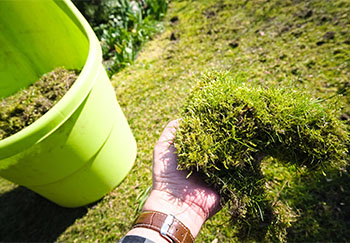
Apply Evergreen Complete 4-in-1 to Kill Moss & Weeds
You need to kill the moss before removing it. The most effective way to do this is to use a product that can both kill the existing moss and stop it from regrowing. With Evergreen Complete 4-in-1, you can eliminate moss, feed your lawn, kill other annoying weeds, and improve soil condition in one application. Using a spreader like those from Scotts, apply the product evenly across your lawn, making sure you follow the rate recommended in the instructions. Water your lawn well after application, and you can expect to see results within a week or two. You’ll know it has worked when you see the moss blacken across the lawn. Weeds will be killed within a few weeks.
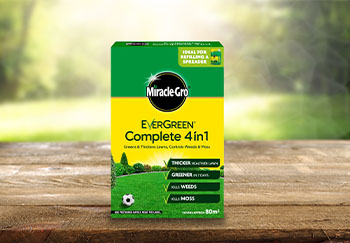
Use a Lawn Scarifier to Dig Up the Dead Moss
After applying the 4-in-1, it’s time to remove the dead moss from your lawn using a scarifier. If you’re thinking of how to scarify the lawn, as mentioned, this simply means to remove thatch, dead grass, and moss from your lawn, which can help make it healthier and lusher. You can do this manually with a rake, which will be an effort if you have a large patch. The easiest and quickest way is to use a powered scarifier. The best time to scarify the lawn is during the growing season when the grass is actively growing. It’s essential to adjust the scarifying height of a powered one, so you’re only removing the top layer of thatch and dead material, without harming your grass.
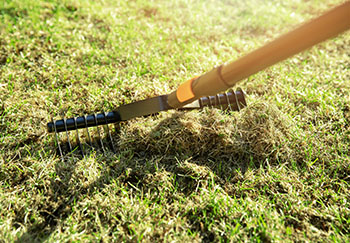
Use a Shovel, Hand Trowel, or Edging Tool to Remove Stubborn Moss
At this stage, you’ve already eliminated most of the moss from your lawn, but there might be some stubborn patches still present. You can remove this moss by hand. Collect all the moss in a bag and dispose of it in your compost bin or garden waste bin with the rest.
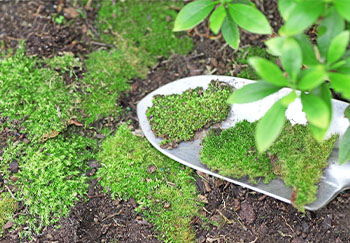
Grass Seed and Lawn Fertiliser
With the moss out of the way you’ll be able to see what grass you have left. It might be more than you think too. Now is the time to rejuvenate what’s there and get more grass growing. You’ll do this by reseeding and fertilising. Clean the lawn spreader of all 4-in-1 you used previously so you can use it to apply the seed evenly first, then a granular lawn fertiliser. A fertiliser contains essential nutrients for existing grass to regrow and for new grass to grow. Use our handy guide on fertilising your lawn for tips at this stage. Be sure to water in thoroughly. If it rains this is ideal, if not you will have to use the hose and sprinkler. After a few weeks you might see some patches where the seed never took. Simply reseed again and water in.
Top tip – you can encourage more seed to take to the soil by lightly treading on it to ensure contact. Any seed that just sits on top won’t germinate as well.
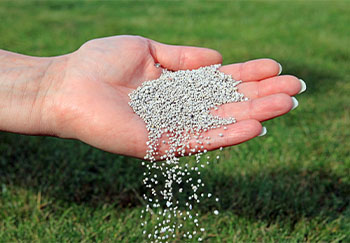
Prevent Future Moss Growth
It’s important to take preventative measures to reduce future moss growth too. One of the most effective ways of doing this is by regularly aerating or spiking the lawn. This process helps to improve water penetration, reduce soil compaction, and encourage air circulation and root growth. This can be done using foot spikes, or as simple as using a garden fork in areas where moss was most stubborn. Sometimes powered scarifiers come with different attachments that can aerate too, so if you have this give it a try.
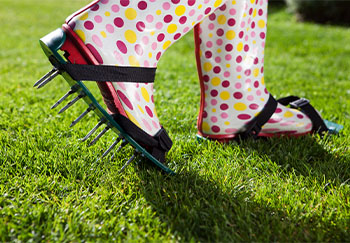
No More Moss
Getting rid of moss in your lawn might seem like a daunting task – even if it is covered in it – but with the right products, process and care, it can be straightforward with just a bit of effort required. Using the right products, scarifying, and ensuring some maintenance will surely help you achieve a lush, green, and moss-free lawn that you can enjoy. Regularly weed and feed your lawn, stay on top of mowing and watering, and your lawn will repay you with a vibrant and healthy appearance that you can be proud of.
